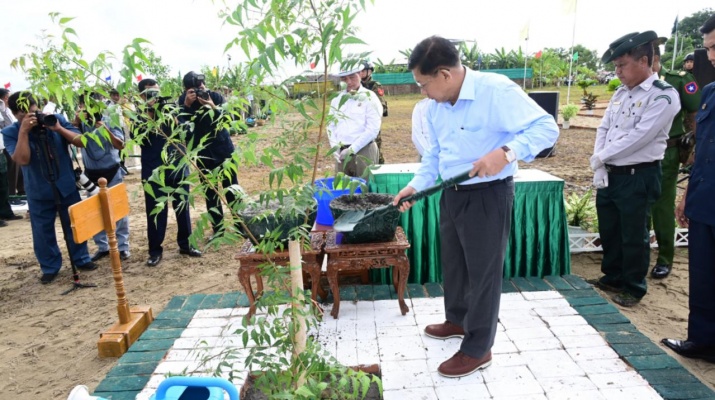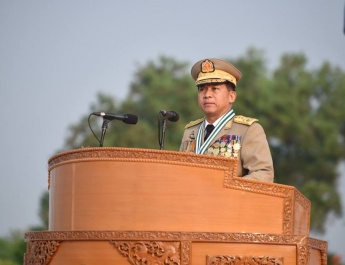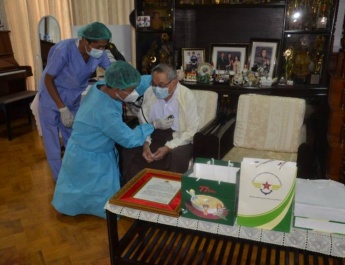Nay Pyi Taw August 19
The National-level public movement tree-growing ceremony 2025 in Minbu Township, Minbu District of Magway Re-gion to green 13 dry zones took place at the place betweenmile-posts 4/7 and 5/0 on Minbu-Padan-An road in Minbu Township this morning, attended by Chairman of the State Security and Peace Commission of the Republic of the Union of Myanmar Senior General Min Aung Hlaing who grew a neem sapling.
The ceremony was also attended by Daw Kyu Kyu Hla, wife of the Senior General, Commission Secretary Joint Executive ChiefGeneral Ye Win Oo, Union ministers U Min Naung, U Khin Maung Yi and Dr Charlie Than, Magway Region Chief Minister U Tint Lwin, senior military officers from the Office of the Commander-in-Chief, the commander of Central Command, deputy ministers, departmental officials at township, district and Magway Region levels, town elders, teachers from universities, colleges and basic education schools, students, people from wards and villages and officials.
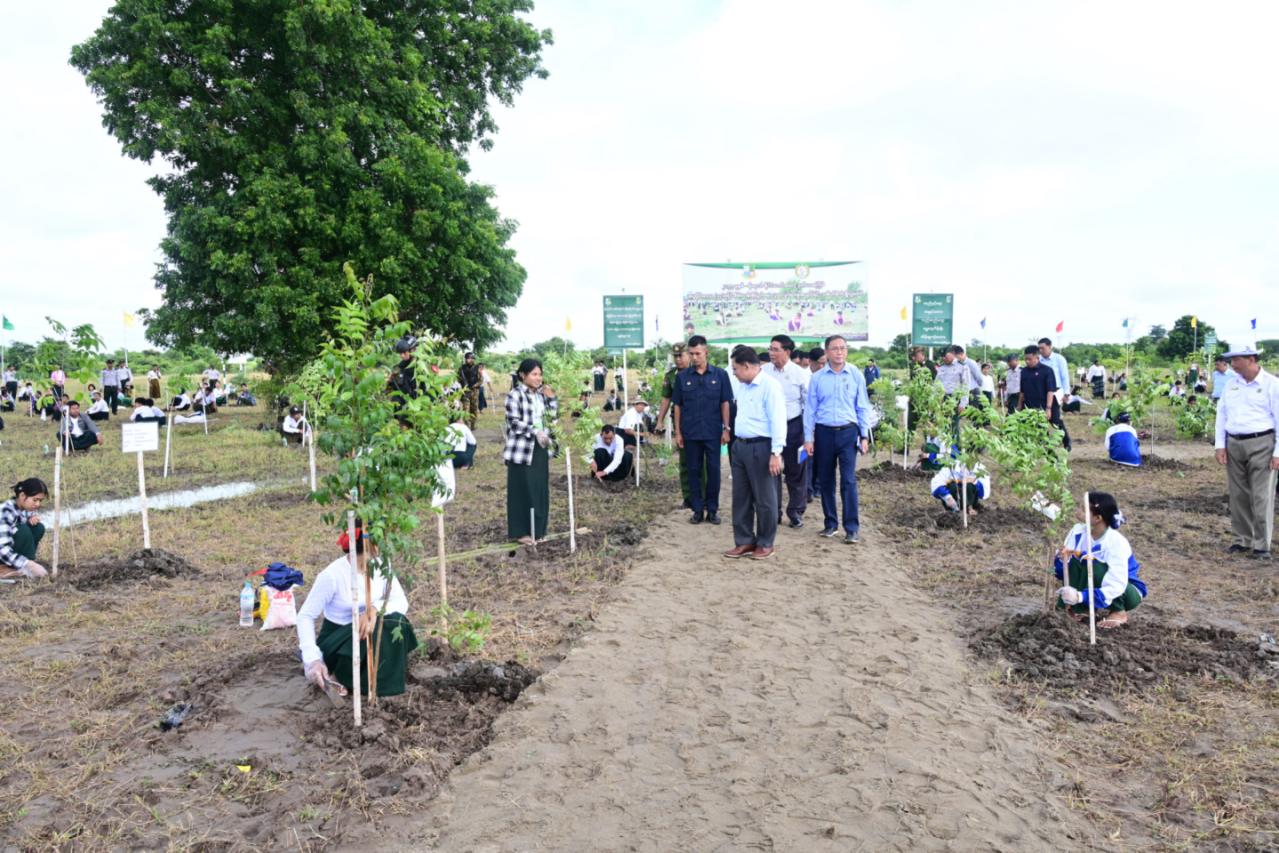
Speaking on the occasion, the Senior General said regar-ding the second round of mon-soon public tree-growing ceremonies held in 2025 across 13 districts of the dry zone, it was stated in the opening remarks that tree-growing ceremonies have been personally led every monsoon season. In particular, the Senior General noted that because temperatures in the tropical regions are becoming increasingly hot, the second round of tree-growing is being carried out. On 11 July, the first tree-planting ceremony was personally led in Meiktila District. At the same time, tree-planting ceremonies were also conducted in 29 townships across the 13 dry zone districts, where about 35,000 trees were planted in total.
Today, a total of 1,000 saplings from seven species will be planted collectively as part of the public movement. Minbu is located within the tropical zone, and this region is currently experiencing irregular rainfall patterns, reduced rainfall, and extreme fluctuations in temperature. Last year, Minbu was listed among the 15 hottest cities in the world. Therefore, planting trees in this area is considered the best way to mitigate the impacts of extreme heat. Without trees, soil degradation will worsen, tree survival will decline, and the land will become overgrown with thorny shrubs. To prevent such outcomes, proactive tree planting and protective measures must be carried out.
It was noted that although natural disasters cannot be prevented, with people’s preparedness, preventive measures, perseverance, and efforts, it is possible to provide a certain level of protection. Through tree planting and forest conservation, shade and shelter can be created, and the environment can become greener and more pleasant. In this region, more tree planting and environmental conservation activities should be carried out. As the saying goes, “One good tree can shelter ten thousand birds.” When birds come to rest, they bring seeds with them, which sprout into new trees, further enriching and greening the natural environ-ment.
Due to the limited access to electricity in this region, people rely on cutting firewood for cooking. During his tenure, the Senior General urged each village to establish a two-acre firewood plantation. There are 963 villages in five townships in Minbu District, and if each village plants two acres, nearly 2,000 acres could be established. If replanting is done annually, many more trees and forests will grow, greatly contributing to a greener environment. Similarly, if each household plants just one tree, with around 170,000 households in Minbu District, then annual planting would significantly increase forest cover. It was also remarked that if such planting efforts had been implemented consistently in the past, the climate conditions in this region would already have improved by now.
In 2005, forest cover in the country stood at 49 percent, but it has now declined to only 42.19 percent, a decrease of about 7 percent. Efforts are being made to restore forest cover to around 50 percent. According to reports, the Mini-stry of Natural Resources and Environmental Conservation planted a total of 16.27 million trees during the past period. At present, plans are also in place to expand tree planting in the 13 tropical districts under a five-year program from 2025-2026 to 2029-2030. If these pla-nting efforts are carried out successfully, they will bring significant benefits to environmental greening and will also help mitigate the impacts of climate change.
It was stated that for roadside greening, shade trees will be planted along road areas, and small forest plantations of five acres, 10 acres, and similar sizes will be established. Therefore, local residents of Minbu were also urged to take part in making their region greener. In tree planting, it was emphasized that “every tree planted must be nurtured to survive.” From the very beginning of the monsoon planting season, trees must be planted systematically to ensure their survival and growth. Those responsible for tending the forests and trees were also urged to take proper measures to strengthen the roots and help the trees thrive. It was noted that the benefits of the trees planted today will be enjoyed by future generations, and such efforts will be a valuable legacy handed down to them. The tree-planting ce-remony held today was descri-bed as a meaningful and auspicious event for the region, and gratitude was expressed to all participants who joined in the planting.
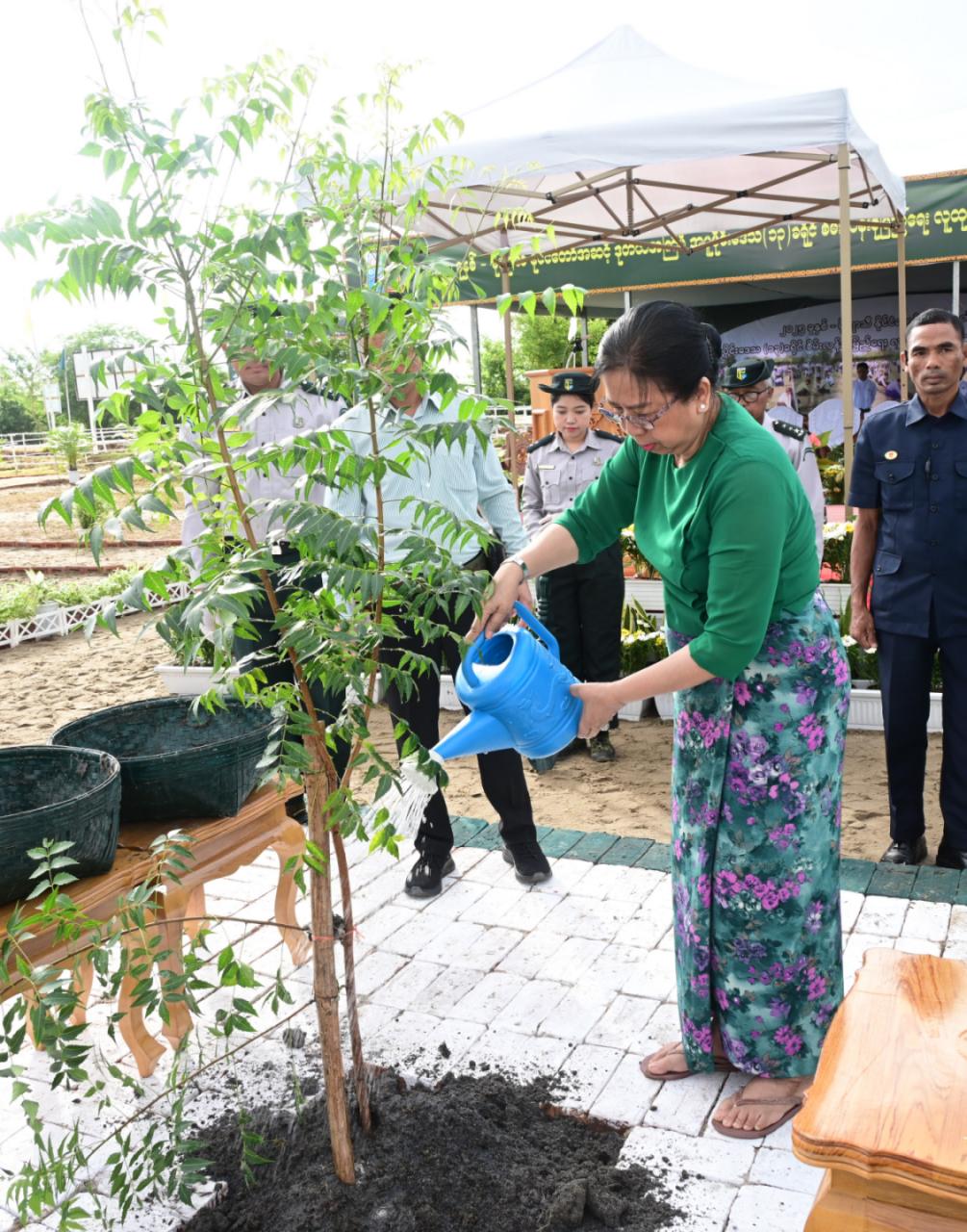
The Senior General and his wife planted a neem sapling at the designated place.
Commission Secretary Joint Executive Chief General Ye Win Oo, Union ministers U Min Naung, U Khin Maung Yi and Dr Charlie Than, Magway Region Chief Minister U Tint Lwin, senior military officers from the Office of the Commander-in-Chief, the commander of Central Command, departmental officials from township, district and region levels, town elders, deputy ministers, teachers, students and officials grew saplings at the same time.
The Senior General viewed round active participation of attendees in growing saplings at the ceremony.
At the ceremony, a total of 1,000 saplings of six species such as neem, Indian elm, gum-kino, Indian mahogany, Mezali, Flamboyant and Hton-pauk were grown as the public activity.


